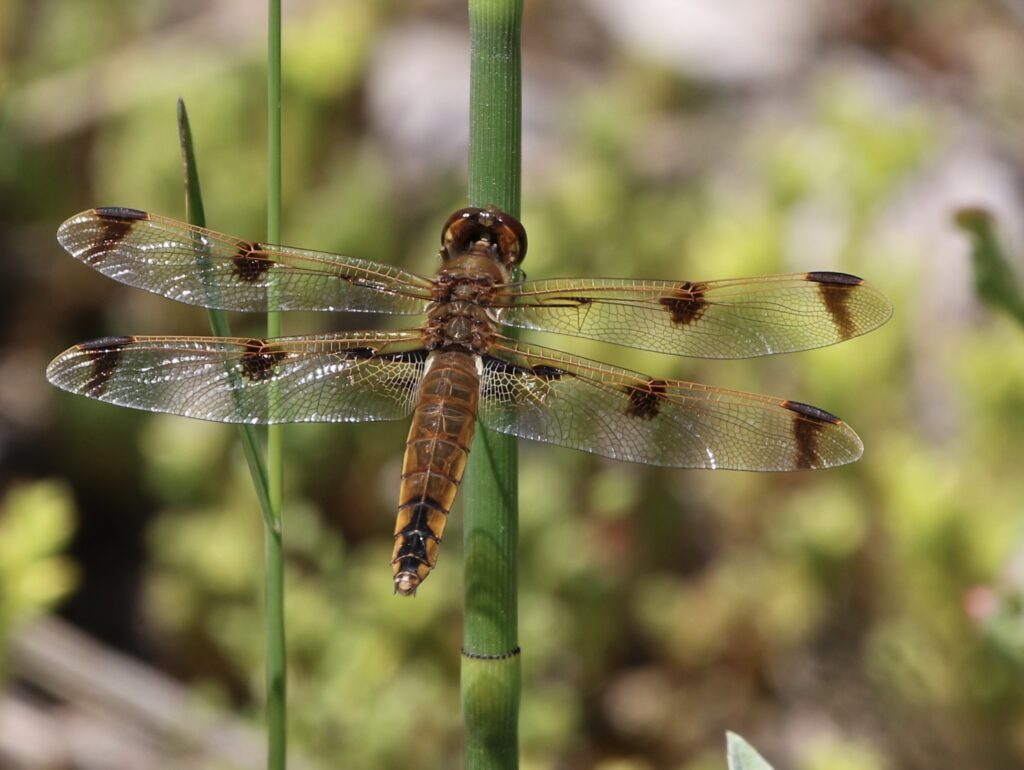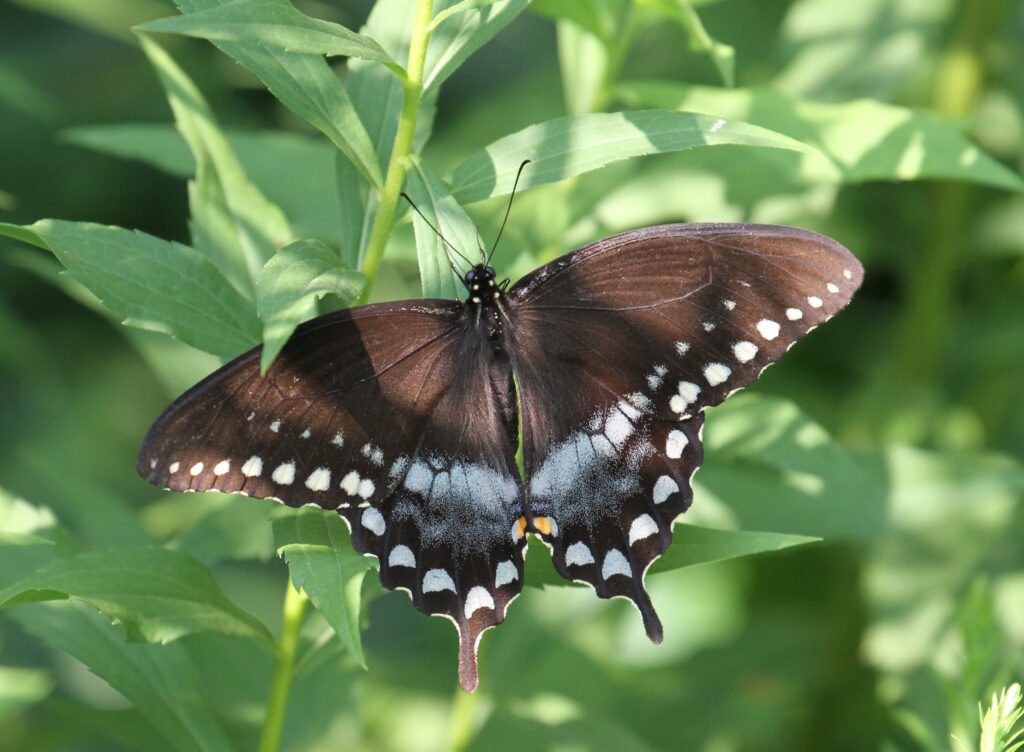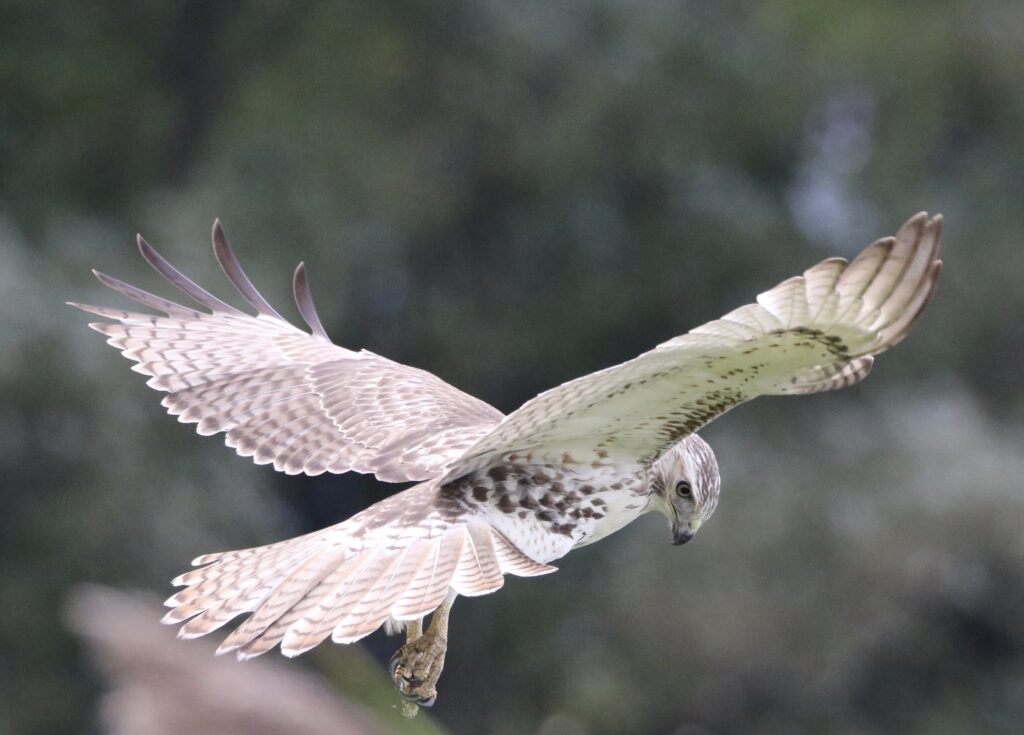On June 13, I went to High Park in Toronto’s west end for what I thought would be a day of butterflies and dragonflies. The park is vast (161 hectares, or 400 acres) and contains a variety of habitats, including wetlands and one of the last dry-oak savannahs in the Greater Toronto Area. More than 90 species of butterflies have been recorded in the park and more than 60 species of dragonflies and damselflies. It’s also a great place for birds, but by June 1st, spring migration is over, and I turn my attention to the bugs.
I brought binoculars and a camera with me. The morning was warm and sunny. As soon as I stepped into the oak savannah near the park’s entrance, I could tell it was going to be a spectacular day for all kinds of insects. I’d just started to photograph a Painted Skimmer dragonfly, when a young woman approached and asked if I took photos of birds.

I was annoyed at being interrupted.
“Sometimes,” I said.
“Well, because there’s a big hawk on the ground over there, and it looks like it’s injured.”
I snapped a final shot of the dragonfly, then walked with her to a spot just off one of the footpaths that intersect the savannah. She pointed, and I could see a Red-tailed Hawk sitting in a large patch of dog-strangling vine and other weeds. The hawk’s wings were spread out and its beak open. It seemed to be in distress. At first, I thought it might have prey, but there was nothing in its talons.
“I watched for half an hour,” the woman said. “All the off-leash dogs were harassing it.”
I said maybe one of the dogs had bitten the bird and broken its wing. The hawk couldn’t seem to lift itself out of the weeds.
The woman asked if there was something we could do.
“I don’t know,” I said. “I’ll walk over to the restaurant and see if there’s anyone there who can help.”
She thanked me and left, and immediately, another woman came over with an off-leash Weimaraner.
“There’s something wrong with that bird,” she said. “My dog went after it, but I was able to stop him in time.”
I asked if it had occurred to her at any point to put her dog on a leash. Although there is an off-leash area in the park, the oak savannah isn’t part of it.
She shrugged and said, “He’s a good dog.”
I started walking to the restaurant but stopped first at the Nature Centre, an old green-roofed building with classrooms, meeting spaces, and a kitchen. The thought occurred that there might be a naturalist on staff who had experience with injured birds. The building was open but no one was there. Two city workers were in the back yard fixing a water main. I told them about the hawk, and the older of the two said he’d call the head of the park’s Works Department. He told me the people from the Nature Centre were out leading a Baby Walk.
Just then the Baby Walk returned, about a dozen parents, each with a baby in a sling that they carried in front. Two middle-aged women were in charge. I told them about the hawk and asked if they could help.
“No, we can’t,” said the first woman. “We’ve got our hands full as it is, so don’t bother us. Why don’t you find a big stick somewhere and use that to keep the dogs away from the hawk?”
“Right. I’ll just stand there for the next six hours beating off the dogs, while the bird gets weaker and weaker. Why didn’t I think of that?”
The other woman was more helpful. She said there was nobody on staff qualified to deal with such a situation, and that I should call the Toronto Wildlife Centre (TWC), which functions as a rescue and rehabilitation service. She looked the number up on her phone and gave it to me. I called. The greeting message goes on for about 10 minutes, then you can leave your own message with a name and number. They promise to return all calls within an hour.
After leaving a detailed message, I walked over to the restaurant, the Grenadier Café. It was a little after noon. I ordered lunch, and just before the sandwich arrived, my phone rang. It was Susan from the TWC. She had a list of a dozen questions to ask, and when she was through, she said it was impossible to send out a rescue crew unless she knew for certain that the hawk was still in place. Could I go back, take a photo, and send it to them?
I tried to explain that: 1) the bird wasn’t going anywhere, and 2) I’d just ordered lunch, but she was adamant. So in the end, I gobbled down my sandwich, then walked back across the park to get a picture of the injured hawk.
No bird. I couldn’t find it anywhere, and there was nobody else around to ask. By then I was so fed up with the whole situation that I walked all the way down to Colborne Lodge, at the far end of the park, to photograph the butterflies that frequent the flower beds there.

Around 1:30 my phone rang. It was the Toronto Wildlife Centre, but I was so angry, I shut the phone off and didn’t answer. What’s the point? I thought.
Fifteen minutes later, the phone rang again, and this time I did answer. Susan again: she said a team was in the park trying to find the hawk, but they didn’t know where to look. Could I meet up with them and guide them to the spot?
I suggested meeting in front of the restaurant. It took me 15 minutes to walk back. I could see the TWC truck sitting in the parking lot, but no one was inside. I was about to call Susan back, when two young people in uniform hailed me. They were the team: James and Emily. We got in the truck and drove back to the oak savannah.
I said to James: “You know, it’s been hours by now. We might not be able to find the bird.”
“Don’t worry,” he said. “Emily has a sixth sense. If the hawk is there, she’ll find it.”
He parked the truck, and we walked into the savannah. Emily had a net and James a blanket. I led them around and through the weedy areas, then stopped and pointed at a tree stump.
“That’s my marker. The bird was right in front of that stump when I saw it.”
James and I waded through the weeds to the tree stump and then thrashed around in the dog-strangling vine. The hawk was nowhere to be found. Suddenly, a shout from behind us.
“I got it!” Emily, of course. By the time we turned to see, she already had the bird in her net. It had burrowed through the weeds and was nestled against an oak tree trunk when she found it.
James came over and pulled the hawk from the net by its legs, then wrapped it in the blanket. I asked if the wing was broken.
“Oh, no. This bird’s still got down on its breast. It must have fallen out of the nest and then couldn’t get out of the weeds. It feels really light, so it probably hasn’t eaten in a day or two.”
We were walking back to the truck with the bird wrapped in the blanket, when a Red-tailed Hawk screamed above us. James stopped and pointed to the sky. “That’s the mother bird,” he said. “Calling to her chick.”
It was a strangely emotional moment for me. In fact, I realized, once the truck had left and the bird was on its way to the rehab centre, that I’d been so caught up in the drama of the moment that I’d never taken a single photo of the distressed hawk. It was as if a part of my brain had gone numb until the issue resolved itself and I could relax again.


What a great story— a true drama! The reactions you got at first are what so often happens, but I love that you took the time to help…it isn’t easy when you have your plans already in place, which is how it is most of the time! And you know, the story is better without the picture, because all along I was picturing the baby hawk in my mind and that’s even better. Beautiful shot of the dragonfly too!